THERE’S been a big change in the weather in Ross-on-Wye – as nearly 160 years of manually recording the town’s rain and sunshine comes to an end.
Its weather station is becoming fully automated, and the team of volunteers led by Dr Andrew Rogers have taken their last measurements at the Walford Road/Kent Avenue site.
Come rain, shine, gales or snow, the weather watchers have made daily recordings since the station was reopened by BBC weatherman Ian McCaskill in May 1984.
But the town’s history of weather records – one of the longest in the world – goes right back to 1859, when town draper and Royal Meteorological Society (RMS) member Henry Southall founded a station at The Craig in Ashfield Crescent.
He was succeeded after 55 years by parish church organist and choir master Fred Parsons, who set up his own station in 1914 at the Chasedale in Walford Road, and observed the weather for 60 years, founding the current observatory in 1921.
After retiring aged 84 in 1974, there was a nine-year gap before town mayor Arthur Clarke made it his mayoral project to relaunch the station, with retired chemist Howard Ellis recruited by the Met Office to run it, assisted by husband and wife team, June and Rex Swallow. June ran the station from 1995 to 2008 with Dr Rogers the final station chief.
He said: “There’s a bit of sadness that manual recording is coming to an end after nearly 160 years. But although a bit of the town’s history is passing, recording is still going to keep the town on the weather map.
“When Cllr Clarke relaunched the station in the 1980s, he hoped to put Ross-on-Wye on the map. And he did quite literally, with the town’s weather published in the likes of The Times and Daily Telegraph newspapers.
“I was always interested in the weather, right from school, and have been doing this since 1996. June, who was then running the station, appealed for volunteers, so I went on a course at the Met Office, and here we are more than 20 years later.”
The final team of observers comprised Dr Rogers and his wife Jackie, Celia Glover, Gill Roes-Francken, Peter Reynolds, Phil Angus, Neal Hopcraft and Sheila and David Walshaw, with each covering an allocated day of the week.
And the Met Office’s regional officer Stuart Herridge was at the station site, which is owned by Ross Town Council, last week to make presentations of their birth date weather maps to each volunteer.
“We just couldn’t have done it without them,” he said, “and we’re really grateful for all their work. It’s fantastic for us having such a long archive of weather records from Ross, as it helps us analyse changes in climate and the like.
“We have networks around the country, from big sites at Heathrow and military bases down to smaller stations like this. Sites like Ross-on-Wye, with its long history and its raised vantage point above the landscape, are a godsend to us, allowing us to plot changes over a long period, such as the weather appears to be getting wetter and warmer.
“The volunteers have been here without fail taking records at 9am every day, measuring sunshine, rainfall, temperature, cloud cover and wind, giving us a snapshot of that day’s weather.
“Now some of the observers are wanting to retire, we didn’t want to close the site, so we’ve automated it, to keep weather recording going in Ross.”
The new system will see solar-powered measurements automatically sent via phone to the Met Office. By contrast, the volunteers had to observe the readings on eight thermometers, including four in the Stevenson’s shelter recording current, maximum and minimum temperatures and humidity, two soil thermometers, and “grass” and “concrete” measurements’; the rain gauge; the Campbell-Stokes sunshine recorder on the observatory tower and wind conditions using the Beaufort scale.
“We’d also record the visibility from the tower – Hay Bluff 35km away meant perfect visibility – cloud cover, the state of the ground, and if it had been snowing, snow depth and then by melting it, how much had fallen,” explained Dr Rogers.
“The most rain we ever had in 24 hours was 84mm on July 6 to 7, 2012, while the coldest was -14.5C on Boxing Day, 2010, and the hottest was 35C on July 19, 2006.”
Wife Jackie said: “It’s been really interesting monitoring the weather, but one thing which never stops is people asking you about tomorrow’s weather, and we have to explain that we record the weather, we don’t forecast it.”
Fellow volunteer, Celia Glover, who recorded for 25 years, added: “Sometimes you are out in gales, thick snow, torrential rain, and it can be pretty horrible in high winds up on the top of the tower, but it’s all been worth it.”
Gill Roes-Francken said: “I well remember finding the rain jar full of water when the floods covered Gloucestershire in 2007, but you also get localised weather here. I recall one flash storm with lots of rain, and the Met said ‘that can’t be right’, but it was.”
But spare a thought for Fred Parsons, who was still climbing the 10m-high observation tower to measure sunshine and solar temperatures into his 80s.
When the balloon went up with the start of World War One, he was one of the first five meteorologists to see service in the British military, before agreeing in 1921 to make six to seven recordings of 15 measurements every day of the year at the Ross station for the Air Ministry’s newly formed Met Office, including at 6am, converting them into code and wiring them from his hut.
He was awarded an MBE in 1965 after 50 years recording, and by the time he finally stepped down, had carried out more than 100,000 sets of weather recordings.
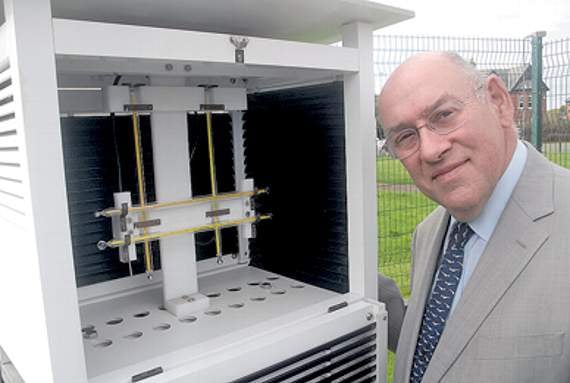
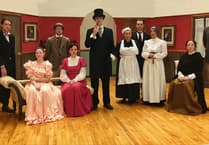
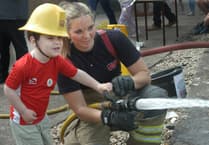
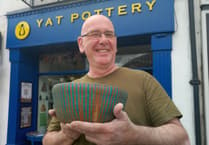
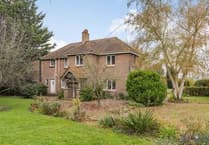
Comments
This article has no comments yet. Be the first to leave a comment.